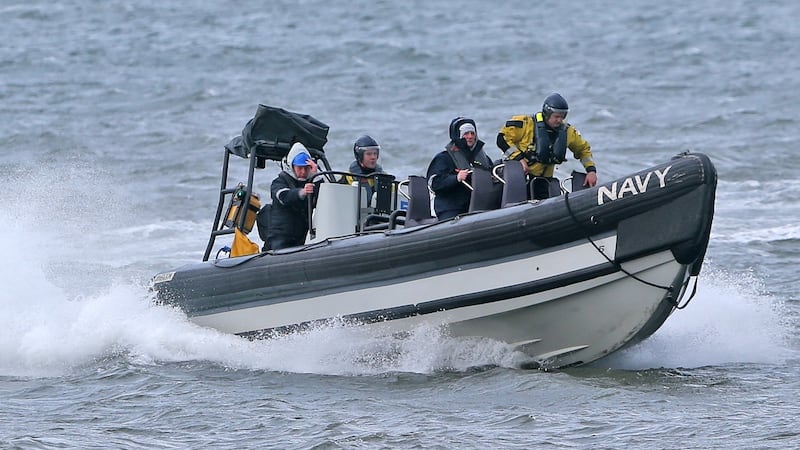Taoiseach Enda Kenny has said it is imperative to find out what happened to the Irish Coast Guard helicopter which crashed with four crew on board on Tuesday, March 14th, off the north Mayo coastline.
Mr Kenny, who met relatives of the three missing airmen and search teams in north Mayo yesterday, was commenting hours before the Air Accident Investigation Unit confirmed publicly that a tail section of the helicopter appeared to have struck the western end of Blackrock island.
Irish Coast Guard senior pilot Capt Dara Fitzpatrick died, and her three fellow crew – co-pilot Capt Mark Duffy, winch operator Paul Ormsby and winchman Ciaran Smith – are still missing, since their Sikorsky S-92 aircraft lost communication close to Blackrock lighthouse, 13km west of their refuelling point at Blacksod lighthouse in the early hours of March 14th.

The Dublin-based helicopter, Rescue 116, had been tasked to provide support cover for Rescue 118, its Sligo counterpart, which had flown to evacuate an injured fisherman on board a Scottish vessel 241km off the west coast.
Near-gale force westerly winds and a heavy Atlantic swell restricted continued search efforts on Monday, but Mr Kenny paid tribute to the many agencies involved, and to the north Mayo community and local fishermen for their vital “local knowledge” of the coastline.
Sea search co-ordinator
Mr Kenny spent more than two hours on the LÉ Eithne, which is the on-scene co-ordinator for the sea search .
He was briefed by Cdr Brian Fitzgerald of the Naval Service, Irish Coast Guard incident manager Micheal O’Toole, Garda Supt Tony Healy of Belmullet Garda station and representatives of the Naval Service diving section and Marine Institute surveyors.
He was told the aircraft’s voice recorder or “black box” is still emitting the character signal first detected last Wednesday in about 40m of water just 50m-60m off the Blackrock lighthouse plateau’s southeast face. The signal transmits for 30 days, and it is hoped the main wreckage is in this area.
The constant Atlantic swell and turbulent seas around the area make for hazardous conditions, but the Irish Lights vessel Granuaile managed to move close to the location on Sunday evening after a weather window allowed for sonar imaging by two smaller vessels. Its captain, Harry McClenahan, was born in Blackrock, Co Louth, home of Capt Duffy.
Three north Mayo fishermen with detailed knowledge of the tides and currents around Blackrock lighthouse worked with Marine Institute surveyors to create a very valuable picture over the weekend,according to Irish Lights director of operations and navigation Capt Robert McCabe.
Remotely operated
Westerly winds are forecast to ease later on Tuesday, and the ship is ready to deploy the Marine Institute’s largest remotely operated vehicle (ROV), Holland 1, when conditions ease and there is a southerly tidal flow.
A 13-man Naval Service diving team is on station with full equipment, including a recompression chamber on board the Granuaile. However, the ROV is expected to be deployed initially for safety reasons as it can work in reasonably large swells.
While the focus is on searching for the three men, every stage is being monitored by the Air Accident Investigation Unit (AAIU) and Garda as part of two separate inquiries.
“Weather is not conducive to sending down divers and I’m informed that the next window is hopefully next Thursday or towards the weekend,” Mr Kenny said, commending the absolute co-operation there is between the agencies.
Earlier, Mr Kenny met relatives of the airmen and members of the Mullet peninsula communities who are supporting the search, providing hot food and drink to search teams, including RNLI lifeboats, Civil Defence and Irish Coast Guard shore units, along with members of the public who have volunteered to help.











